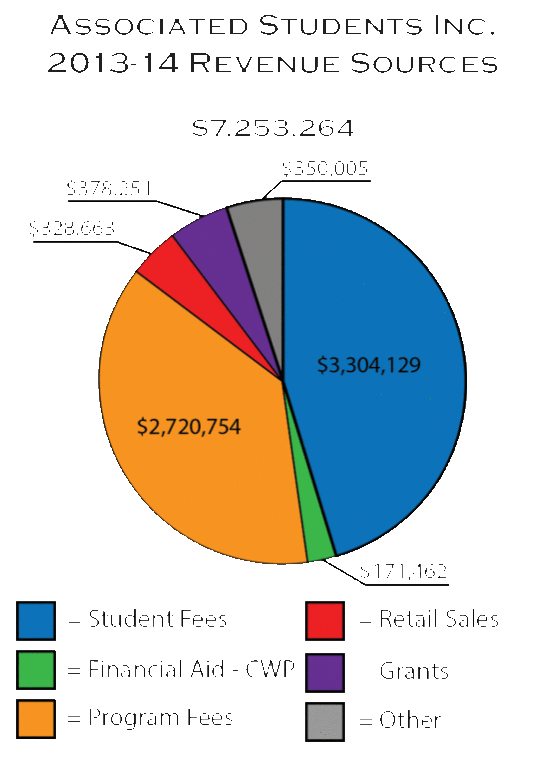ASI approved budget shows signs of recovery due to increased students
October 9, 2013
Although the 2013-2014 budget for Associated Students Inc. was approved in May, noticeable differences have taken place since then.
The current budget shows a recovery rather than the loss board members anticipated in working capital.
This snapshot of current assets minus current liabilities indicates whether a company has enough short term assets to cover its short-term debts.
Macias Gini & O’Connell LLP, a statewide certified public accounting and business management firm, conducted an audit last month based on the 2012-2013 ASI budget.
The report shows there was a surplus of $437,637 in net assets, despite the fact last year’s approved budget had shown there would be a deficit of $169,072 in working capital.
According to the ASI Budget for 2013-2014, there is supposed to be a $179,357 deficit this year in working capital, which is a $10,285 increase from last year.
ASI Director of Finance Mark Montalvo said this does not seem to be a problem.
Montalvo said the apparent deficit in working capital will not impact students directly because it is already balancing itself out.
“For the 2013-14 fiscal year, actual enrollment is higher than originally projected (which means) increased revenue,” Montalvo said. “And actual health care premiums came in lower than budgeted which will be a cost savings for the year.”
Montalvo said there are always unforeseen changes by the time fall arrives.
The budget is put together during a three-month process near the end of spring and is approved by the ASI Board of Directors and President Alexander Gonzalez.
The Student Activity Fee for ASI this year is now $63 per student, which is a dollar more than last year’s fee.
Along with the increase, ASI calculated the budget in spring, based on a head count of 27,892 students for the fall. to the Office of the Registrar, 28,818 students are enrolled this semester.
Kaiser’s health care premiums for department employees were scheduled to go up by 10 to 12 percent, but only increased 0.5 percent, helping to cut down working capital.
In breaking down the total revenue generated for ASI, approximately $3.5 million comes from Student Activity fees.
The other $3.8 million comes from “program service fees, retail sales, federal state and local grants and miscellaneous other sources such as interest earned, donations, and advertising revenue.”
The distribution of $7.4 million in expenditures goes to support the programs’ expenses throughout the year, including full-time and part-time employees, keeping up with the increased cost of living, health care, office supplies, office rent, fuel and student scholarships and grants.
“ASI offers funds in excess of $620,000 for scholarships and grants to help students with their education and the financial obligations they incur working toward their degrees,” Montalvo said.
Another part of expenditure is the $274,000 in external grants distributed amongst 25 programs which include EOP Learning Communities, UNIQUE-Cultural Affairs Series, College Assistance Migrant Program and Career Tracks.
Shoaib Ali, a 23-year-old economics major, said he would have liked to run to be a member of the Board, but he is happy to attend ASI Board meetings and learn about the finances through the Finance & Budget Committee.
“I would like to see more ASI scholarships given out to students,” Ali said.
Dreamer and the Public Radio Experience Scholarship are the newest scholarships available to students.
As more students take advantage of these opportunities, there is a possibility for more money to be granted to ASI which in turn goes to student success.
“Students are always welcome to voice their opinion during the budget development process and your Finance and Budget committee plus your elected board directors are two goods sources to use to give input,” Montalvo said.
The next Finance & Budget Committee meeting on Oct. 15 will present a closer look at Peak Adventures.
Along with the Aquatic Center and Children’s Center, these programs are a large part of ASI’s generated revenue.
For those interested in more specifics, a copy of the approved budget is available on the ASI website by going to the “Financials” section under the “About Us” tab.





























































































































